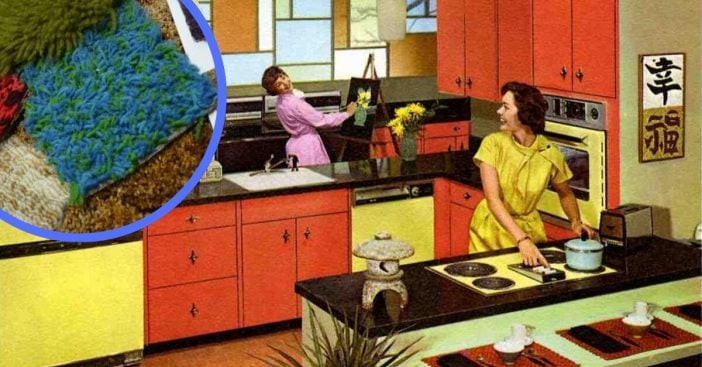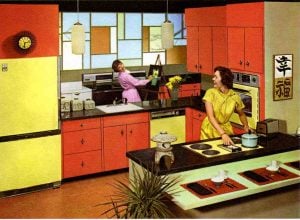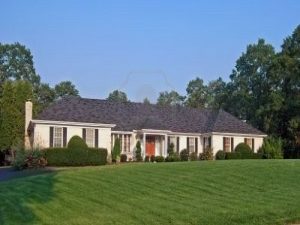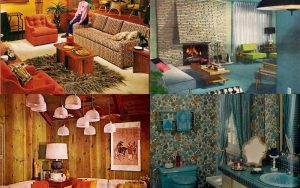
6. The sectional let homeowners play Furniture Tetris

Years ago, Americans still appreciated the convenience and the freedom to choose for themselves. This made sectionals an ideal couch for a den or living room. The flexibility and space available with sectionals let Americans choose who they relaxed in the comfort of their own homes.
Cultural and economic differences may account for why that is different today. People still appreciate the sectional. But plenty more defer to smaller couches. Economic hardships might influence this, as sectionals require greater financial investments. Many conditions affect how the average American house looks.
7. A kitchen that coordinates perfectly with a varied meal

Subtlety was not heeded in the average American home. Not only did their colorful rooms match their wild clothes, but they also mirrored a full, varied meal. This worked well for kitchens, where fruits and veggies of all colors could be found. Previously, boldness was the way to go.
On the other hand, appearances like that spell out a huge renovation for new buyers. Today, buyers want those contrasting colors gone. In their place, homeowners incorporate natural tones and colors that are easy to work with. Rooms are far more subdued these days than they were previously.
8. The average American home, given the choice, was ranch style with room for landscaping

Styles varied based on geography. Ranch styles were in short supply in New York and still are. But when available, Americans appreciated the efficient charm of these houses. Bonus points go to any with a screened-in porch and attached garage.
More and more millennials are reaching adulthood. With this passage of time, they face a rite of passage. But more Americans these days appreciate homes with a bit more character if they buy a home at all. For this reason, the craftsman-style is a very popular model. Among others, though, they simply seek to work within their budget, no matter the aesthetic.
9. Money went towards multiple beds for one couple

Americans in the ’60s shared something in common with British nobility. Among both groups, couples did not always share a bed. Fans of older movies may see proof of this when scenes show two beds for one set of husband and wife. What is perplexing now was custom then, and the furnishing reflected this.
Jump ahead to the present day, and couples spend time finding a single queen or king-sized mattress that suits them both. This development changes the layout of the average American home significantly and reveals the country’s cultural history.
10. Low on space? Pursue somewhere bigger!

Already cultural differences make themselves evident between then and now. The needs of that era guided where people lived. From there, availability guided how they set themselves up. In other words, increased birth rates meant Americans needed more space for bigger families. Once in that larger house, they were comfortably able to give different rooms their own unique purposes. In the 1960s, suburban baby boomers represented a third of the American population.
Compare that to today and it is clear time took its toll. People are fiscally frugal when able. As a result, upgrading in size is not always an option. But Americans still make do. Instead of moving to a bigger lot, they give rooms multiple purposes. A child’s play area may be right in their bedroom. Or they may play in the den, where the whole family can bond. No dining room? That free space in the kitchen can fit a table. No matter the decade, Americans adjust to the times and needs.

Do You Remember These Slang Terms From The 1960s?
And since we’re reminiscing about the groovy sixties… who remembers these wonderful tunes?
For more of these throwback videos, check out our YouTube Channel!
